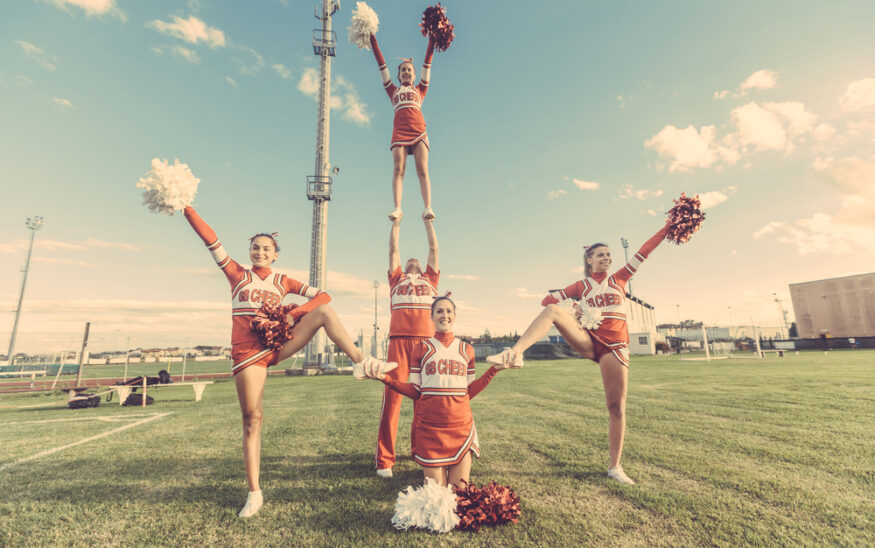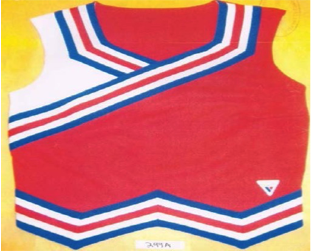The tale of the cheerleader and the protectable 2-D artwork
Why a cheerleader's uniform had the power to change the law of the land
Peter Lemire //April 18, 2017//


The tale of the cheerleader and the protectable 2-D artwork
Why a cheerleader's uniform had the power to change the law of the land
Peter Lemire //April 18, 2017//

Anyone who works in the fashion or the arts is likely aware of the difficulty of protecting your designs, with the constant battle with knock-offs and copycat products. While brand names and distinctive elements can be protected under trademark law, smaller designers and brands often find themselves without recourse if their ideas are replicated.
While clothing designs could possibly be safeguarded under a patent, such protection would be exceedingly expensive and would often take longer to procure than the average lifespan of the garment in question. Additionally, courts have long held that the look and feel of a particular product design is not copyrightable under federal law, given that copyright protection does not extend to the functional or useful aspects of an article.
Courts have also said that generally the design of clothing cannot be separated from its functional and utilitarian purpose of covering the human body. While patterns (the print or decorative design of the fabric used to make the clothes) or graphical images that appear on apparel may be copyrightable, the overall look of the garment is not. Bills are introduced in Congress on an annual basis to extend copyright protection to clothing design, however such efforts have been unsuccessful to date.
Recently, the Supreme Court issued a decision in Star Athletica, L.L.C. v. Varsity Brands Inc. that gives apparel companies additional clarity and possible expanded protection for their products.
The case dealt with cheerleading uniforms and the two-dimensional designs that appear on the surface of the uniforms. Images from the Court’s opinion help give some context to the analysis and discussion:
 It is important to note that the stripes and shaded areas are not actually different pieces of fabric, but are printed onto the fabric itself, thus making the design 2-D artwork.
It is important to note that the stripes and shaded areas are not actually different pieces of fabric, but are printed onto the fabric itself, thus making the design 2-D artwork.
The court ruled that features incorporated into the design of a useful object are eligible for copyright protection only if the feature:
(1.) Can be perceived as a two or three-dimensional work of art separate from the useful article
(2.) Would qualify as protected pictorial, graphic, or sculptural work – either on its  own or fixed in some other tangible medium of expression if it were imagined separately from the useful article onto which it is incorporated.
own or fixed in some other tangible medium of expression if it were imagined separately from the useful article onto which it is incorporated.
In this case, the court reasoned that because the designs could be removed from the surface of the uniforms and transferred to another medium such as a canvas, and that in this new medium the design would be protected as a 2-D work (the striped designs didn’t have any utilitarian function themselves), that the stripped patterns of uniform designs were eligible for copyright protection. The Court emphasized that the cut and style of the uniform was not protected and that its decision would not prevent a competitor from making a similarly configured uniform without the stripped design.
On some levels the Court’s decision is not all that groundbreaking.
It has been universally accepted that pictures and graphics are copyrightable and that a graphical design doesn’t lose its protected status just because it appears on a good, such as a T-shirt or a mouse pad. In fact, Supreme Court Justice Ruth Bader Ginsburg’s concurrence basically would apply that rationale to the case as opposed to the Court’s new two-pronged test.
However, I believe that this decision could open the door for some forward-thinking apparel companies to see if they can use this case to claw some protection for essentially what amounts to the overall design and cut of the garment.
A potential situation where this could happen is in the case, much like the cheerleading uniform, where the 2-D artwork outlines the garment and defines the cut and fit of the garment. There could conceivably be a point where protection of the artwork and 2-D design effectively protects the cut and fit of the garment itself.
It will be interesting to see if apparel companies observe this opportunity and test the bounds of this new decision. If a company is successful in this strategy, clothing and apparel companies could get one step closer to protecting their original garment and clothing designs.
























